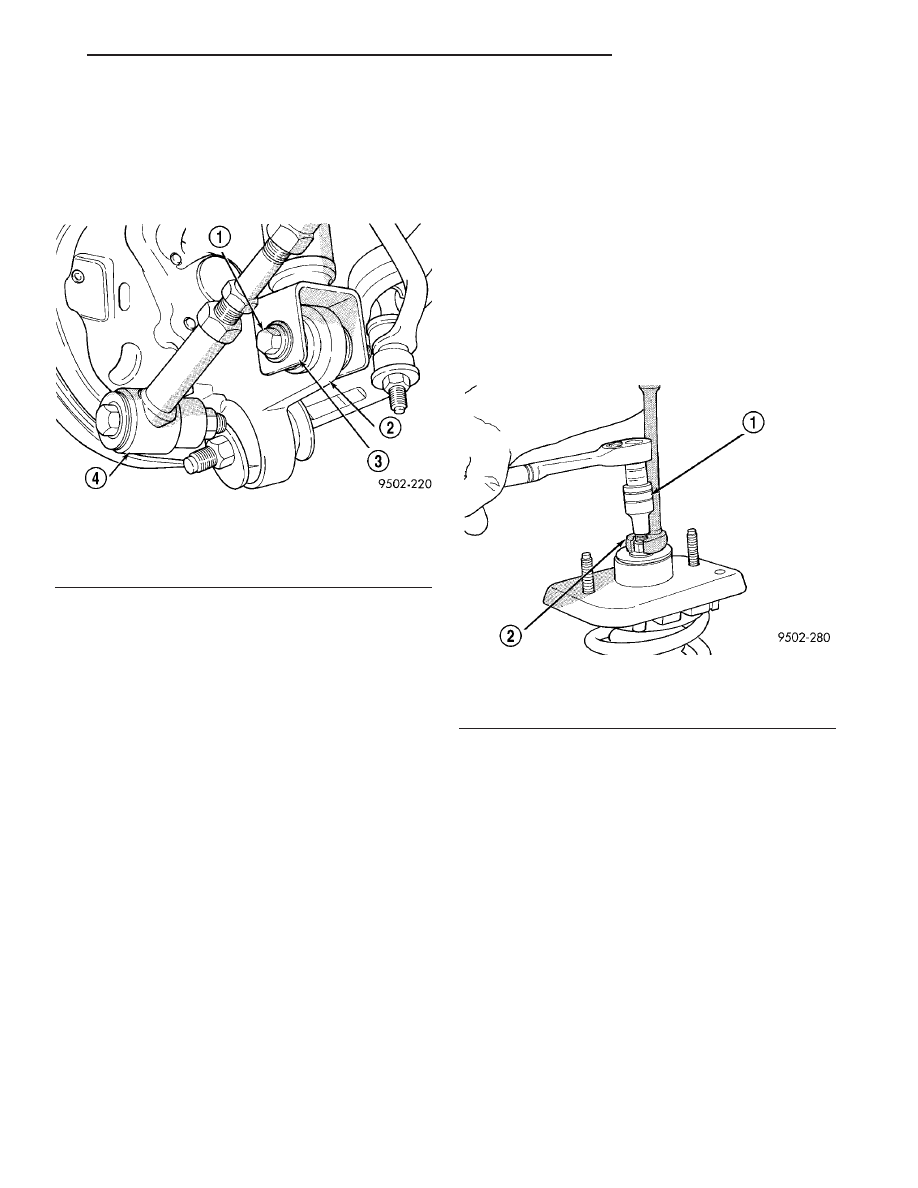Chrysler Sebring, Stratus sedan, Sebring Convertible. Manual - part 272

(5) Remove the rear wheel and tire assembly from
the vehicle.
(6) Remove two fasteners holding the splash shield
to the shock assembly upper mount.
(7) Remove bolt attaching shock absorber to rear
knuckle (Fig. 15).
(8) Remove the shock absorber from the rear
knuckle first when removing the shock absorber from
vehicle by pushing down on the rear suspension.
(9) Move shock assembly downward and tilt top of
shock outward, then remove shock assembly from
vehicle through top of wheel opening.
DISASSEMBLY - SHOCK ASSEMBLY
The shock assembly must be removed from the
vehicle for it to be disassembled and assembled.
(Refer
to
2
-
SUSPENSION/REAR/SHOCK
-
REMOVAL)
For the disassembly and assembly of the shock
assembly, use strut spring compressor Pentastar Ser-
vice Equipment (PSE) tool W-7200, or the equivalent,
to compress the coil spring. Follow the manufactur-
er’s instructions closely.
WARNING: DO NOT REMOVE THE SHOCK ROD
NUT BEFORE THE COIL SPRING IS COMPRESSED.
THE COIL SPRING IS HELD UNDER PRESSURE
AND MUST BE COMPRESSED, REMOVING SPRING
TENSION FROM THE UPPER MOUNTING BRACKET
BEFORE THE ROD NUT IS REMOVED.
(1) If both shocks are being serviced at the same
time, mark the coil spring and shock assembly
according to which side of the vehicle the shock was
removed from, and which shock the coil spring was
removed from.
(2) Position the shock assembly in the strut coil
spring
compressor
following
the
manufacturer’s
instructions. Set the lower hooks and install the
clamp on the lower end of the coil spring, so the
shock is held in place once the shock shaft nut is
removed. Lower the upper hooks and position them
on the coil spring near the top.
(3) Compress the coil spring until all coil spring
tension is removed from the upper mounting bracket.
(4) Hold the shock rod from rotating using special
socket Snap-On
t A136, or equivalent, and remove the
retainer nut.
(5) Remove the upper shock rod bushing retainer
washer from the shock rod.
(6) Remove the upper shock mount and the rod
isolator bushings as an assembly from the rod of the
shock absorber.
(7) Remove the upper coil spring isolator from the
top of the coil spring.
(8) Remove the lower shock rod bushing washer
from the top of the dust boot and shock absorber rod.
(9) Remove the dust shield and cup as an assem-
bly from the shock absorber rod by pulling both
straight up and off the shock rod.
(10) Remove the clamp from the bottom of the coil
spring and remove the shock absorber, lower spring
isolator, jounce bumper, and collar out through the
bottom of the coil spring.
Fig. 15 Shock Absorber Attachment To Knuckle
1 - ATTACHING BOLT
2 - REAR KNUCKLE
3 - SHOCK ABSORBER CLEVIS BRACKET
4 - LATERAL LINK
Fig. 16 Retainer Nut Removal/Installation (Typical)
1 - SHOCK ABSORBER SOCKET
2 - CROW FOOT
JR
REAR SUSPENSION
2 - 41
SHOCK ASSEMBLY (Continued)